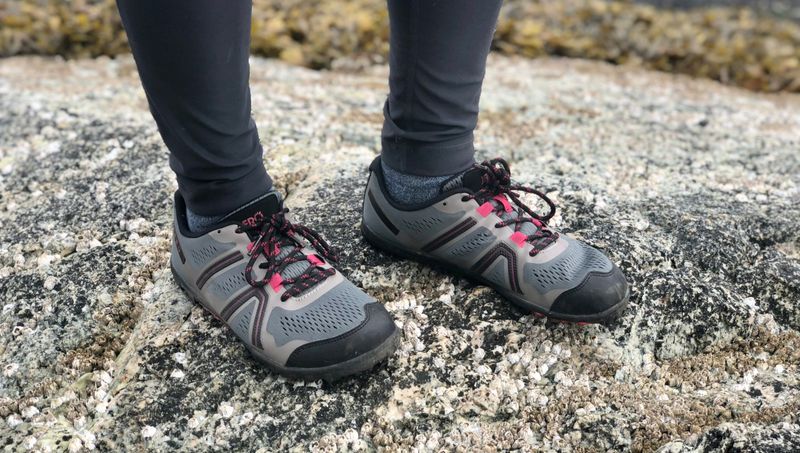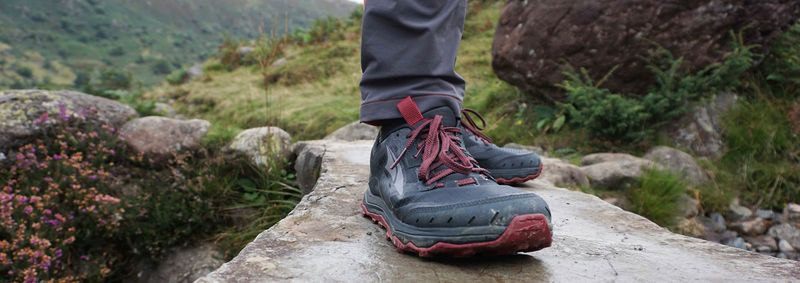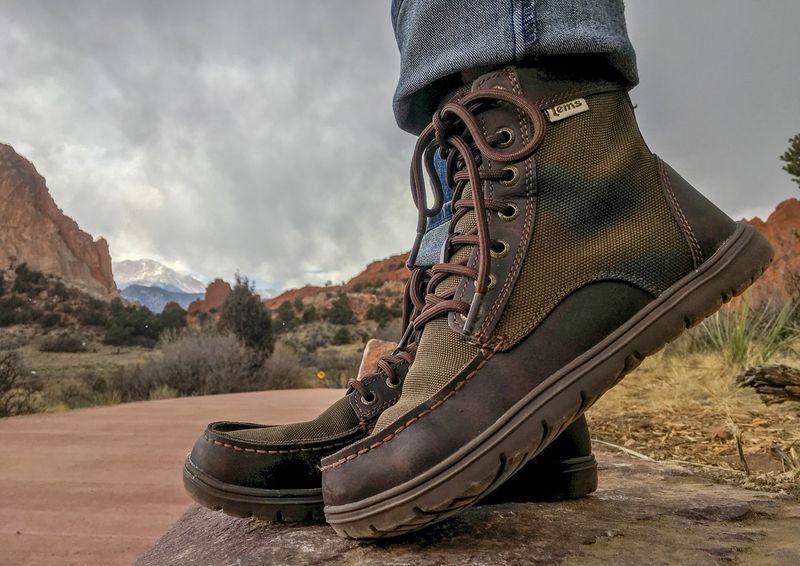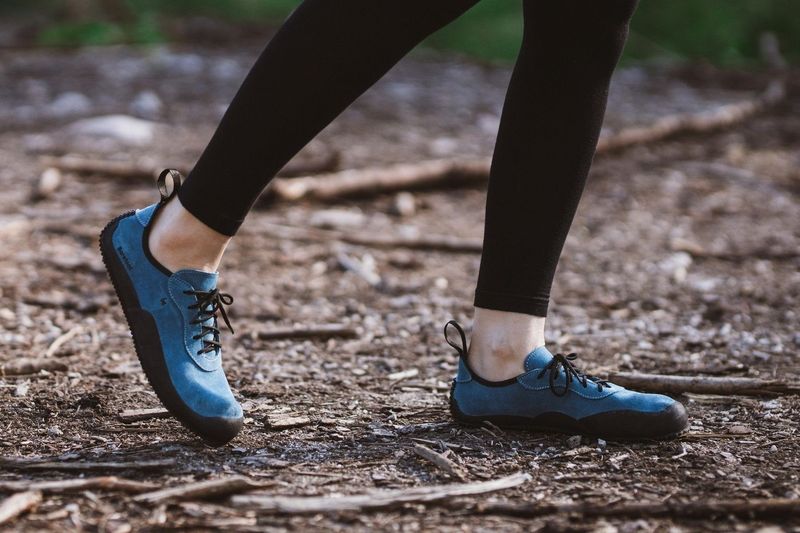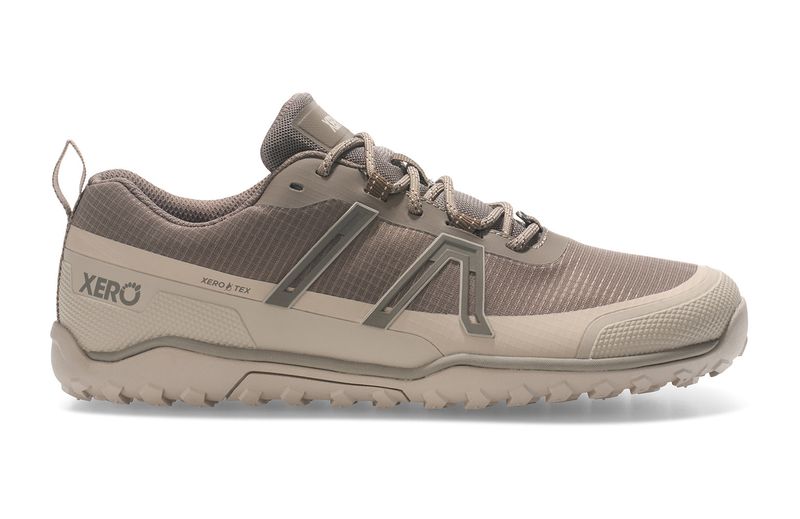Minimalist hiking shoes are changing the way outdoor lovers explore trails. These shoes let your feet move naturally while still protecting them from rocks and rough ground. If you want to feel more connected to the earth beneath you and strengthen your feet at the same time, minimalist footwear might be your perfect match.
Xero Shoes Mesa Trail II
Ground connection meets serious trail performance in this barefoot-style marvel. The Mesa Trail II delivers that authentic minimalist experience without sacrificing grip when paths get steep or slippery. Your feet will thank you for the natural movement this shoe encourages.
Trail-capable traction keeps you steady across varied terrain, from smooth dirt paths to chunky rock gardens. The flexible sole bends with your foot’s natural motion, strengthening muscles often ignored in traditional hiking boots. Perfect for hikers ready to experience trails differently.
Keep in mind that cushioning here is minimal compared to regular hiking shoes. If your feet aren’t used to this style, start with shorter hikes and gradually build up. The transition period matters, but many hikers say the payoff is worth it.
Vivobarefoot Tracker Leather AT
Luxury meets minimalism in this premium outdoor companion. Crafted from quality leather, the Tracker AT offers protection and durability while maintaining that barefoot philosophy. The wide toe box lets your toes spread naturally, which improves balance on uneven ground.
Built for serious outdoor adventures, this shoe-boot hybrid handles rough conditions without weighing you down. The minimalist sole still provides enough feedback to help you navigate tricky terrain confidently. Many hikers appreciate how it combines ankle support with natural foot mechanics.
Expect a higher price tag and some break-in time before these feel perfect. Proper fit is crucial, so trying them on before buying helps avoid disappointment. Once broken in, they become trusted trail partners for years of hiking adventures.
Altra Lone Peak 6
Originally designed for trail runners, this shoe has won over minimalist hikers everywhere. Zero drop design means your heel and forefoot sit at the same height, encouraging natural posture and foot strike. The roomy toe box prevents cramped toes on long treks.
Lightweight construction makes miles feel shorter while still offering decent protection from sharp rocks and roots. The natural foot shape design reduces pressure points that cause blisters and hot spots. Transitioning from traditional hiking boots becomes easier with this balanced approach.
For extremely rugged terrain with loose rock or steep descents, you might want more aggressive lugs. The outsole works great for most trails but could improve on technical sections. Still, countless hikers swear by this versatile minimalist option for everyday adventures.
WHITIN Minimalist Trail Runner
Budget-friendly doesn’t always mean low quality, and this shoe proves it. WHITIN offers an accessible entry point for hikers curious about minimalist footwear without breaking the bank. Getting started with barefoot-style hiking becomes affordable for everyone.
Designed specifically for trail use and backpacking, these shoes handle basic hiking needs surprisingly well. The minimalist design encourages natural foot movement while providing basic protection from trail hazards. Many beginners find this shoe perfect for testing whether minimalist hiking suits them.
Durability and grip might not match premium brands on extremely challenging terrain. For casual day hikes and well-maintained trails, they perform admirably. Consider these your gateway into minimalist hiking before investing in higher-end options down the road.
Lems Boulder Boot
Ankle support joins forces with minimalist philosophy in this unique boot design. The Boulder Boot offers slightly more coverage than low-cut shoes while maintaining that natural foot feel minimalists love. Your ankles get gentle support without restricting natural movement patterns.
The exceptionally wide toe box gives your feet room to spread and grip the ground naturally. This design reduces foot fatigue on longer hikes and prevents common problems like bunions and hammertoes. The flexible sole still allows your foot to bend and flex naturally with each step.
Boot-style construction adds a bit of weight compared to lighter trail shoes. However, many hikers prefer this trade-off for the added protection and warmth in cooler conditions. The versatile design works equally well for hiking, casual wear, and light outdoor work tasks.
Freet ProAlp Contact S2
True barefoot mechanics come alive in this hiking-ready design. The ProAlp Contact S2 prioritizes natural foot function above all else, letting you feel the trail beneath your feet with remarkable clarity. Sensory feedback helps you navigate obstacles more intuitively than cushioned shoes allow.
Built specifically for outdoor adventures, this shoe combines barefoot philosophy with practical hiking features. The construction protects your feet from sharp objects while maintaining ground connection that improves balance and coordination. Hikers report feeling more confident on technical terrain after adapting to this style.
Transitioning from cushioned footwear requires patience and gradual progression. Your feet and lower legs need time to strengthen and adapt to this different way of moving. Start slowly, listen to your body, and give yourself several weeks to adjust properly.
Be Lenka Trailwalker 2.0
European craftsmanship shines through in this minimalist hiking option. The Trailwalker 2.0 blends traditional boot styling with modern barefoot design principles beautifully. Hikers seeking quality construction and minimalist benefits find exactly what they need here.
Known for its generous toe box and minimal sole, this shoe lets feet function as nature intended. The design works especially well for people with wider feet who struggle finding comfortable hiking footwear. Protection and ground feel balance nicely for varied trail conditions.
Cushioning remains minimal, so terrain choice matters when starting out. Smooth trails work best initially, then progress to rockier paths as your feet adapt and strengthen. The investment pays off with improved foot health and more enjoyable hiking experiences over time.
Saguaro Realfoot Minimalist Trail
Newcomers to minimalist hiking find a welcoming starting point here. Saguaro offers affordable barefoot-style footwear perfect for lighter trail use and testing the waters before committing to pricier options. The low investment risk makes experimentation easy and stress-free.
Designed with beginners in mind, these shoes provide basic minimalist features without overwhelming complexity. The flexible sole and natural foot shape help you understand what barefoot hiking feels like. Day hikes and maintained trails suit these shoes particularly well.
Outsole grip and overall durability fall below premium minimalist brands on demanding terrain. For casual hiking and exploring local trails, they perform their job admirably. Think of them as training wheels for your minimalist hiking journey before upgrading to more specialized footwear later.
Xero Shoes Scrambler Trail Low WP
Waterproofing rarely appears in minimalist footwear, making this shoe genuinely special. The Scrambler Trail Low WP combines barefoot design principles with weather protection for wet conditions. Creek crossings and rainy day hikes become less worrisome with this reliable companion.
Despite the waterproof membrane, the shoe maintains low drop and minimal cushioning characteristics minimalists prefer. Your feet stay dry without sacrificing natural movement patterns or ground feel. The rare combination appeals to hikers in damp climates or those tackling water-heavy trails.
Expect slightly more weight than non-waterproof minimalist shoes due to the protective membrane. The trade-off makes sense for specific conditions, though you might prefer lighter options on dry days. Having both waterproof and regular minimalist shoes in your collection covers all weather scenarios perfectly.
Vibram FiveFingers V-Trail
Individual toe pockets create the ultimate minimalist hiking experience. The V-Trail takes barefoot design to its logical extreme, giving each toe its own space for maximum natural movement. Ground connection reaches levels impossible in traditional shoe designs.
Vibram’s legendary sole technology provides surprising grip and protection despite minimal thickness. The unique design strengthens foot muscles dramatically and improves balance through enhanced sensory feedback. Hikers who adapt to this style often become devoted fans who never return to conventional footwear.
Extremely minimal cushioning means adaptation is essential before attempting serious hikes. Start with short walks on easy terrain and progress very slowly over several months. Only consider these if you’ve already succeeded with other minimalist shoes and want maximum ground connection possible.

